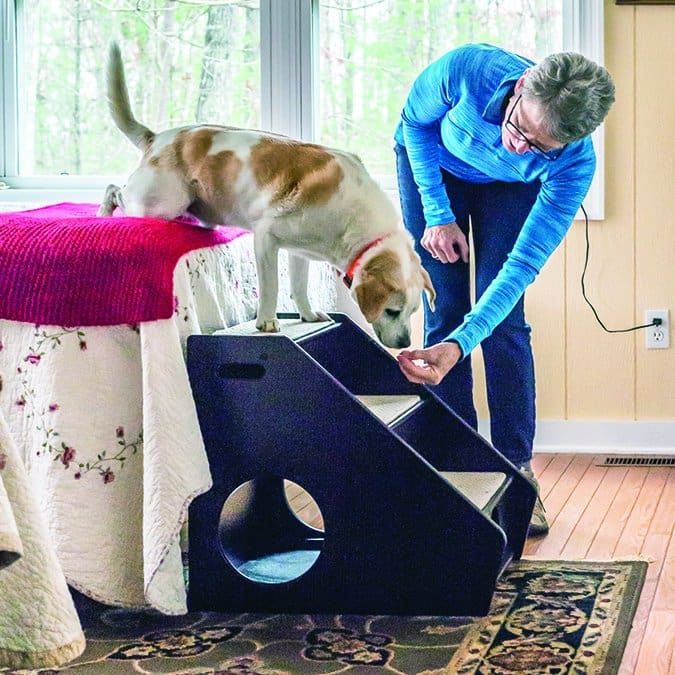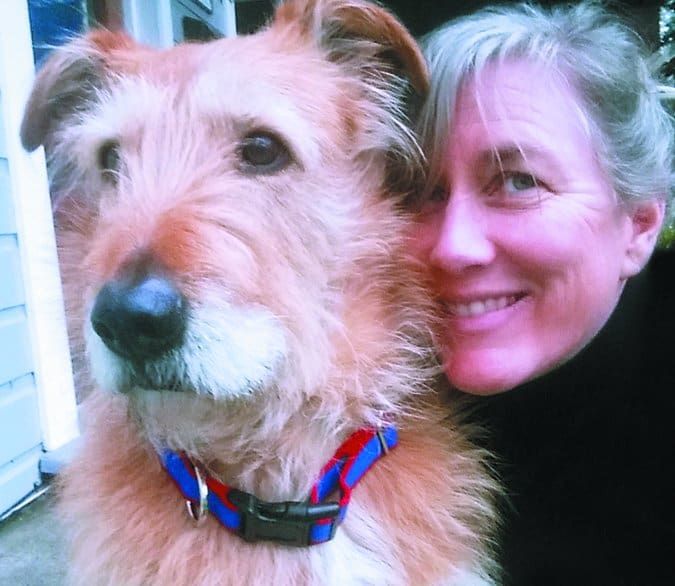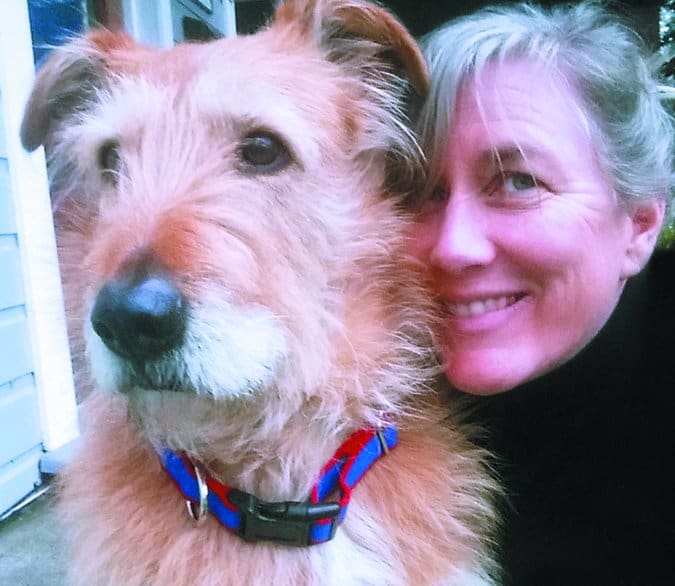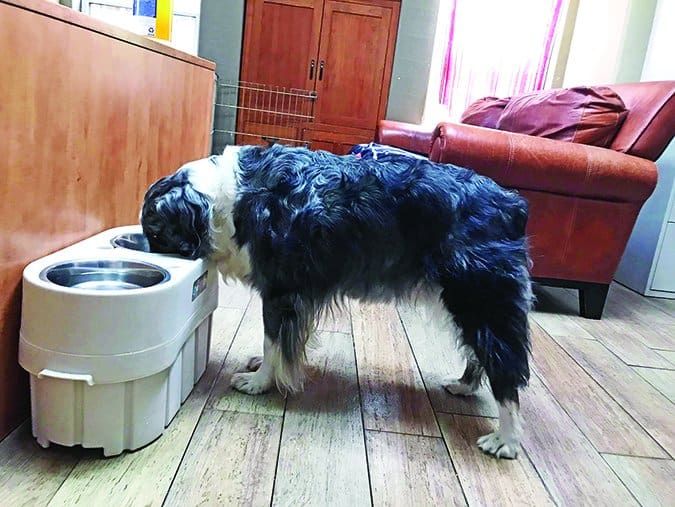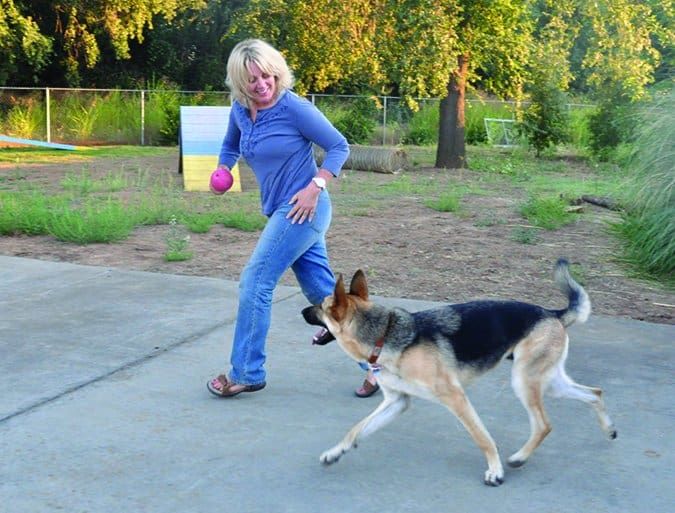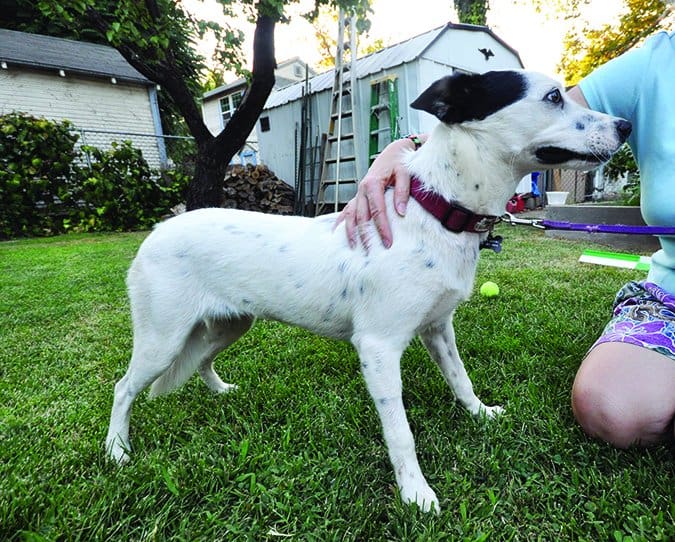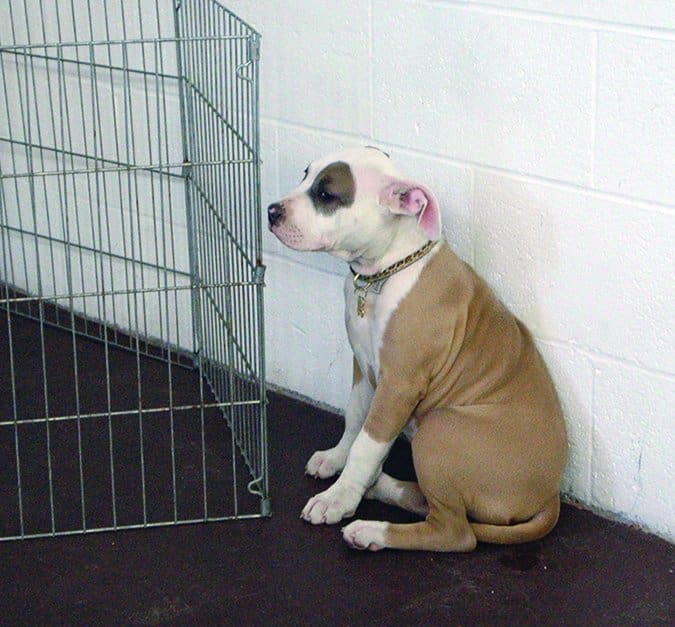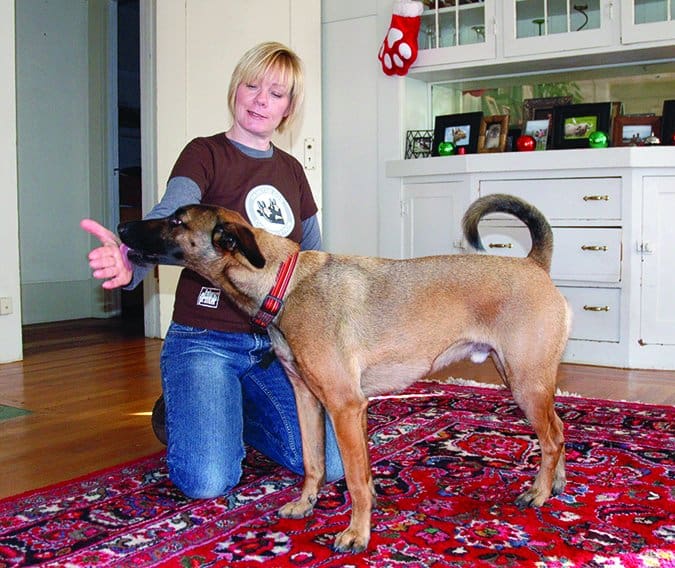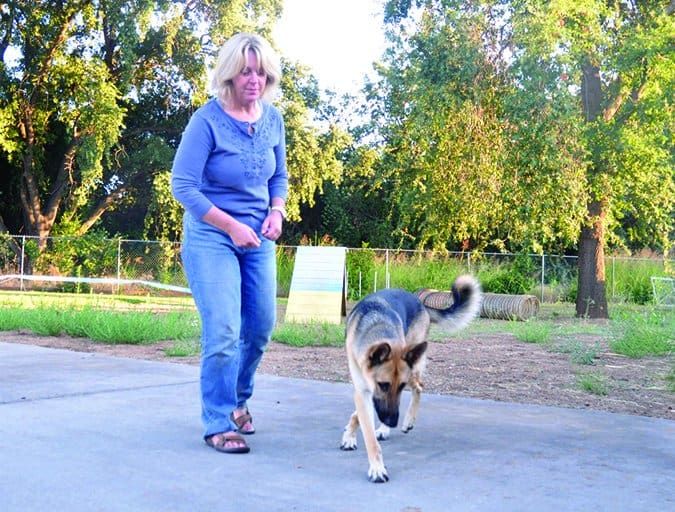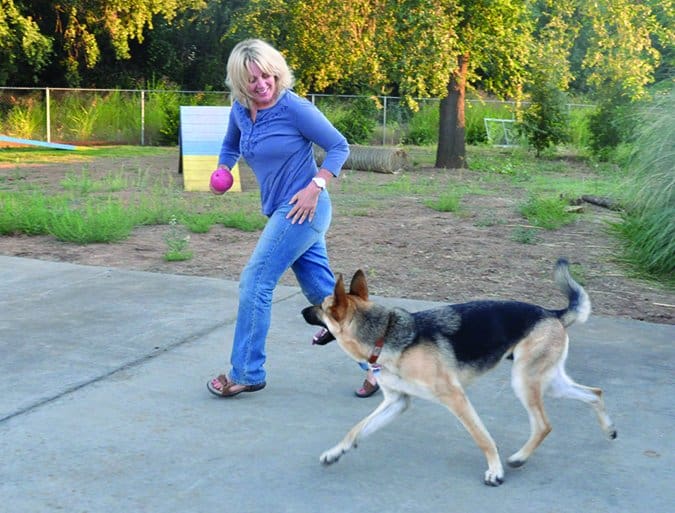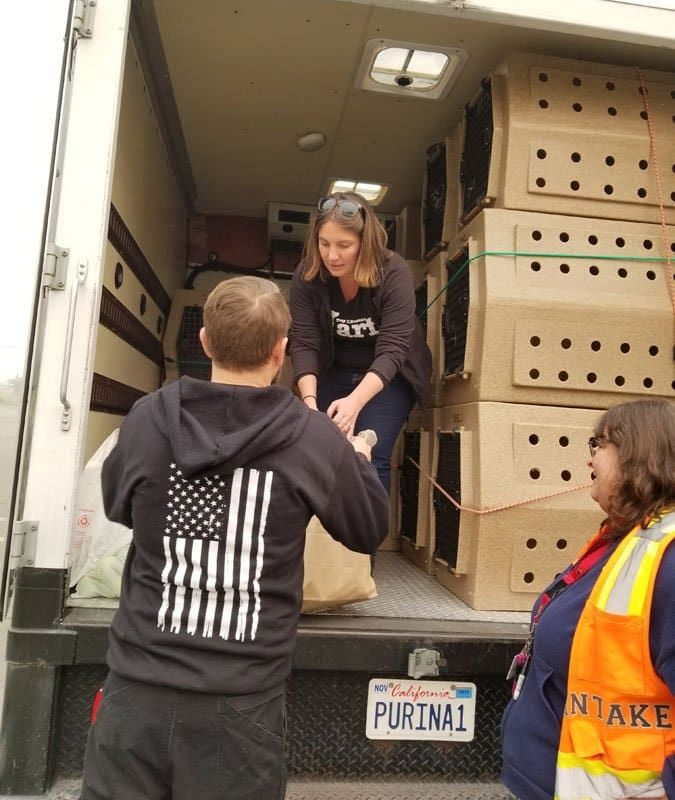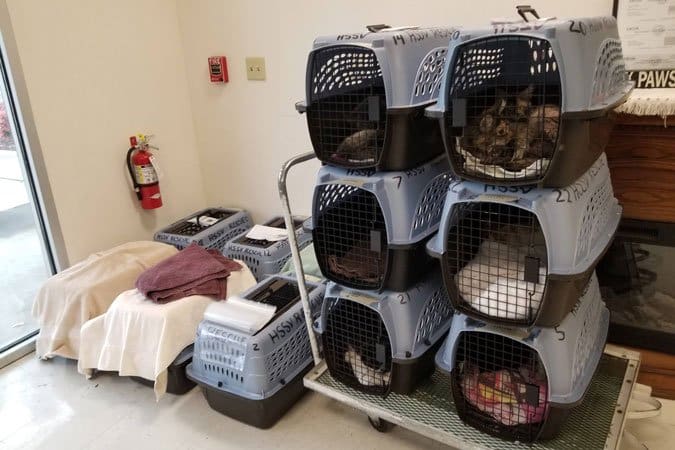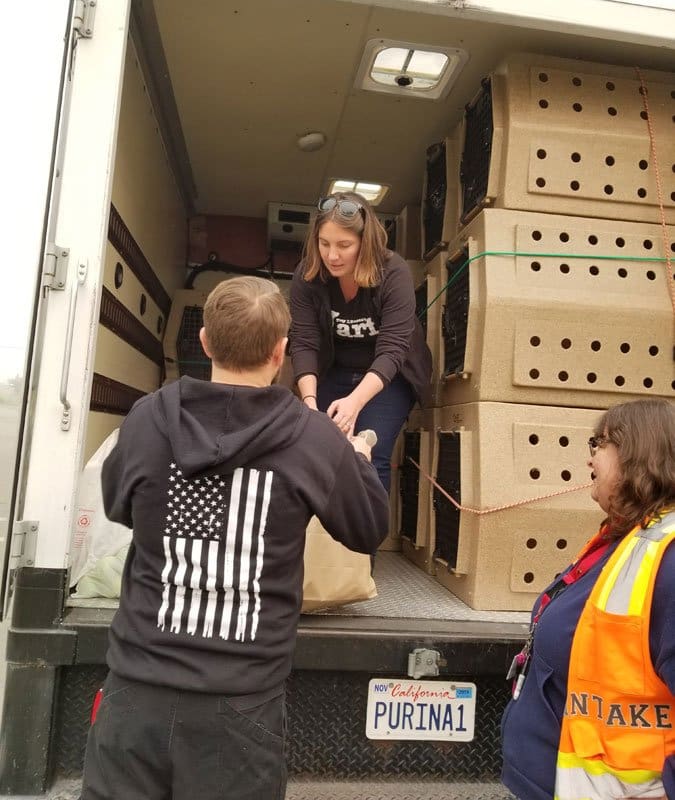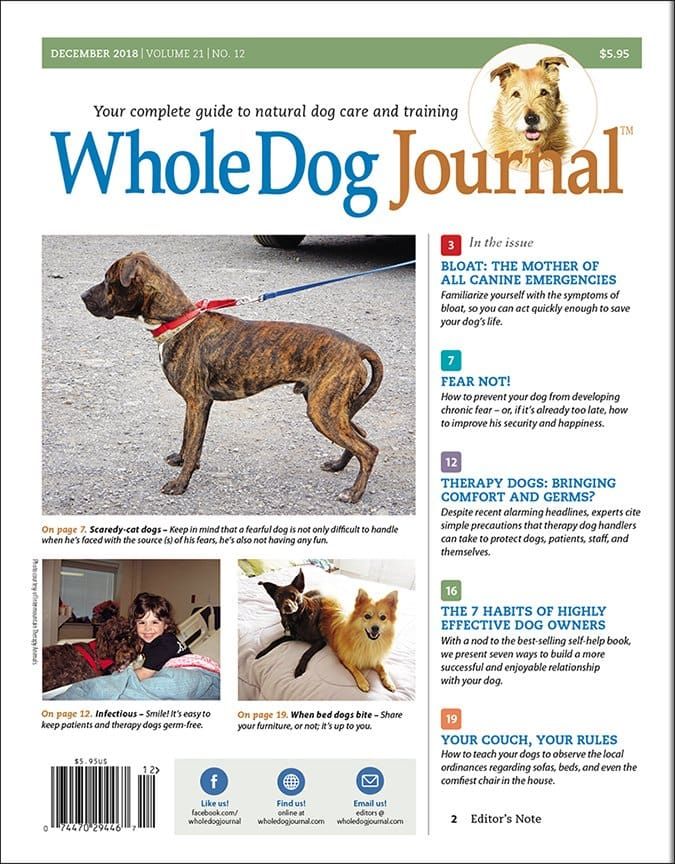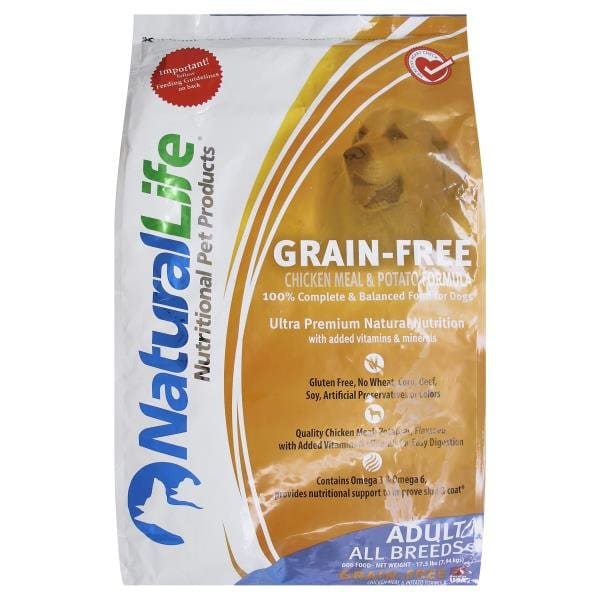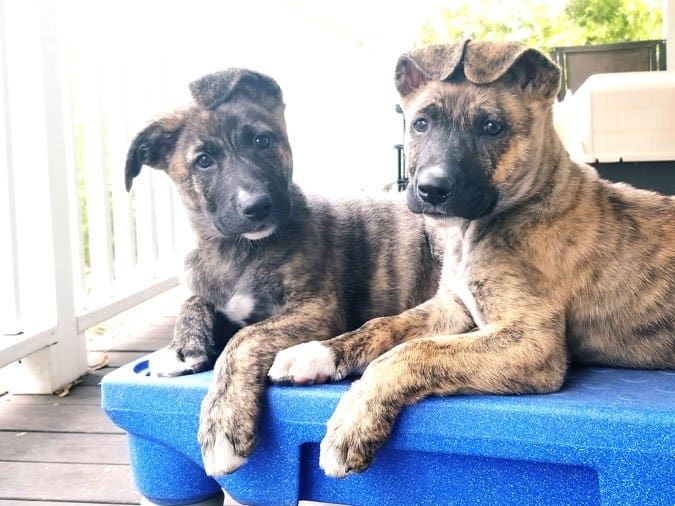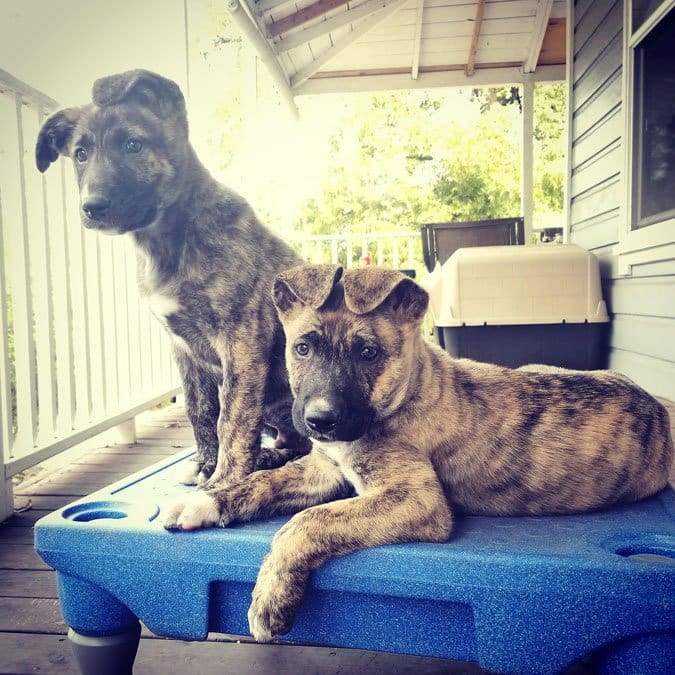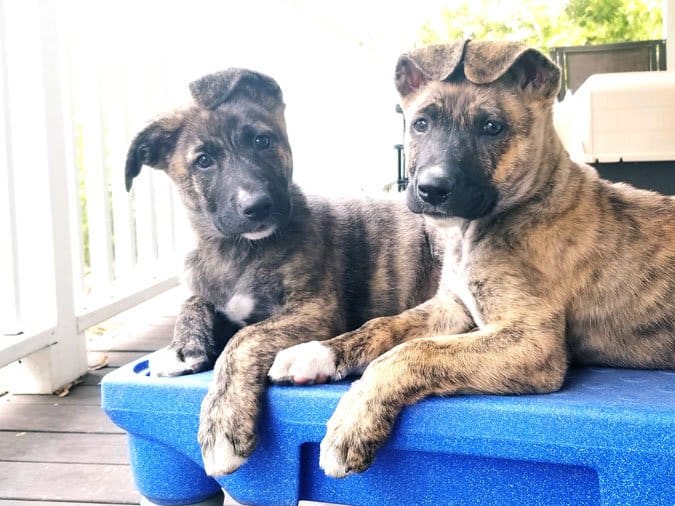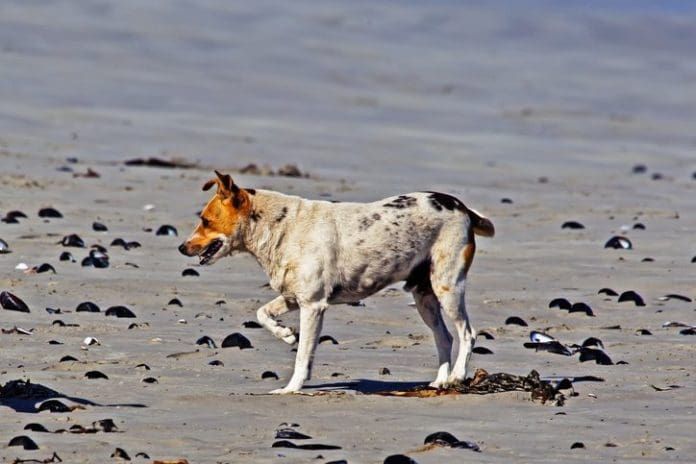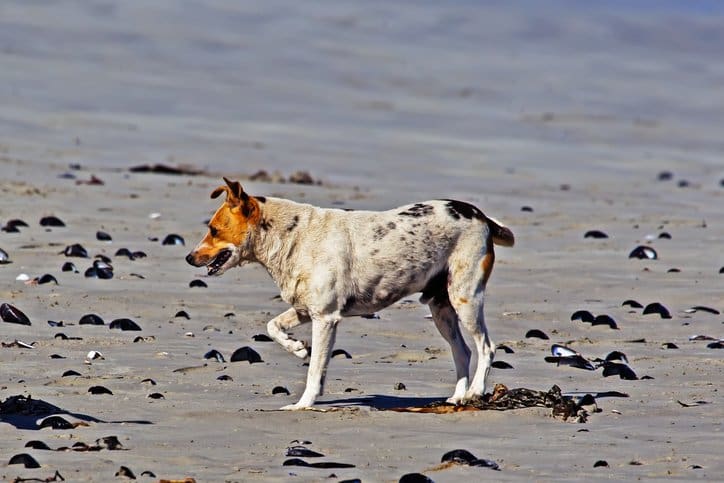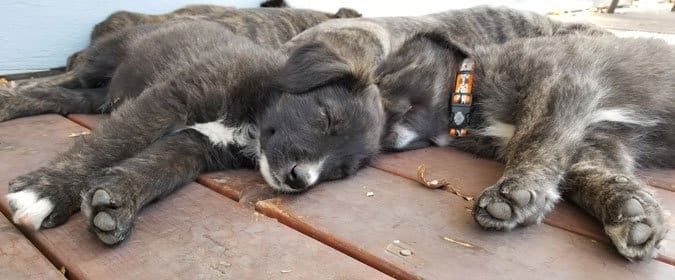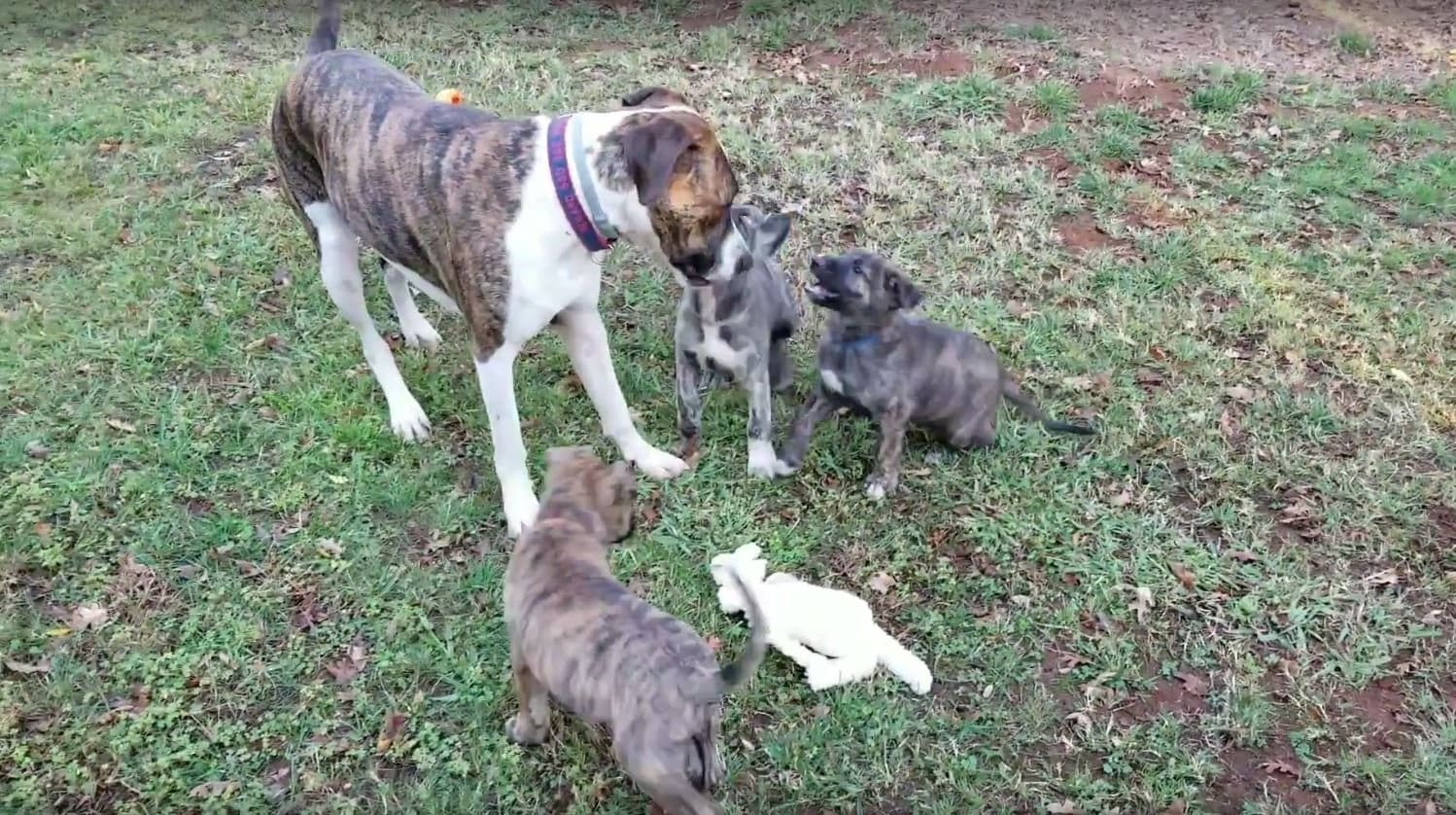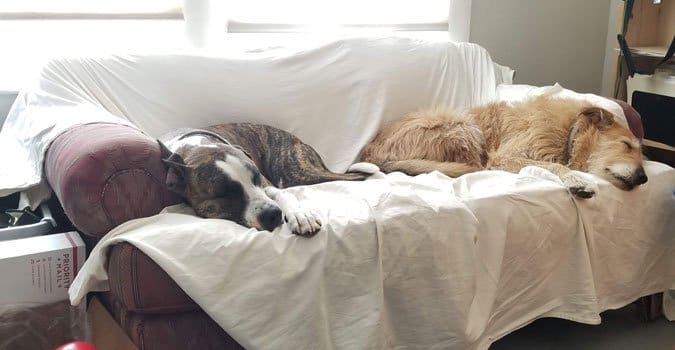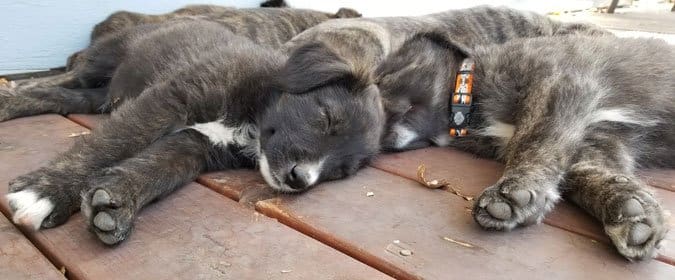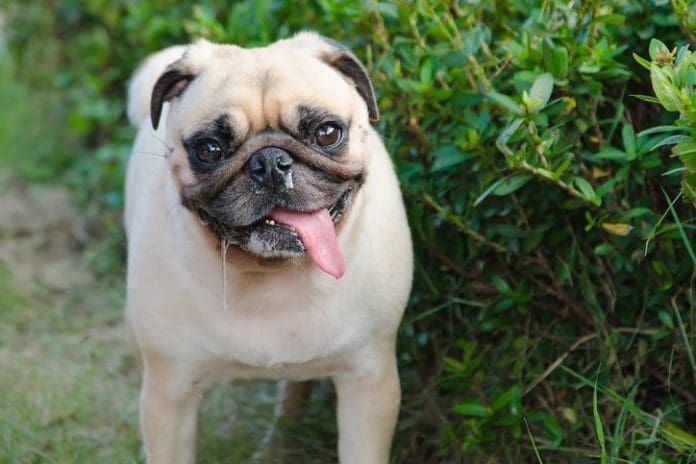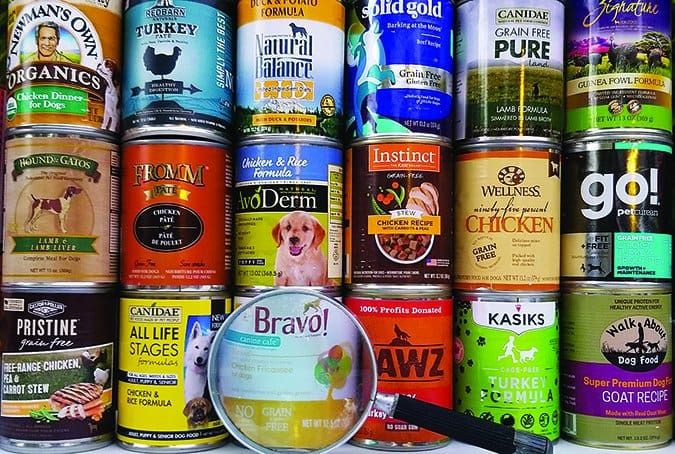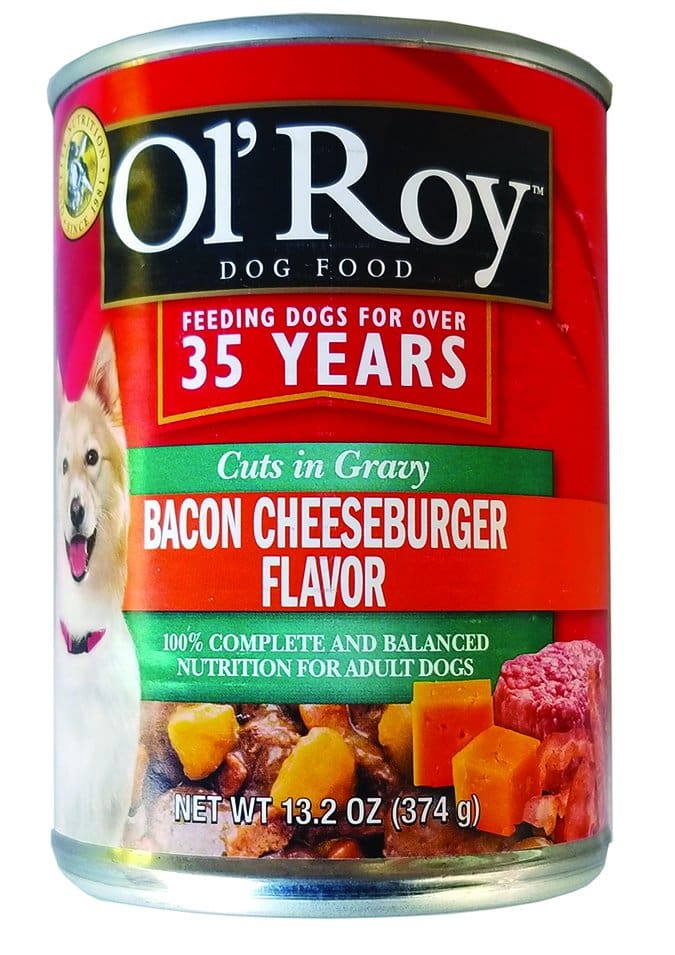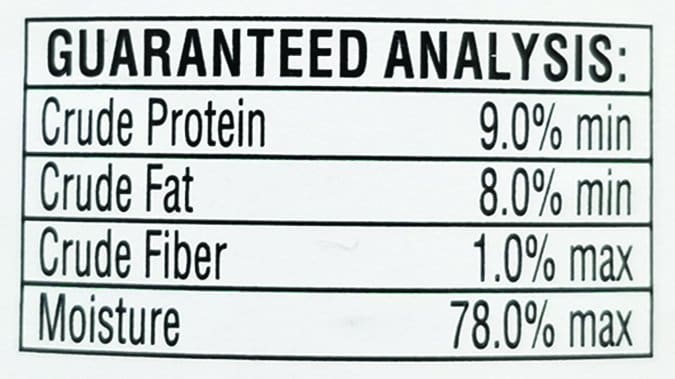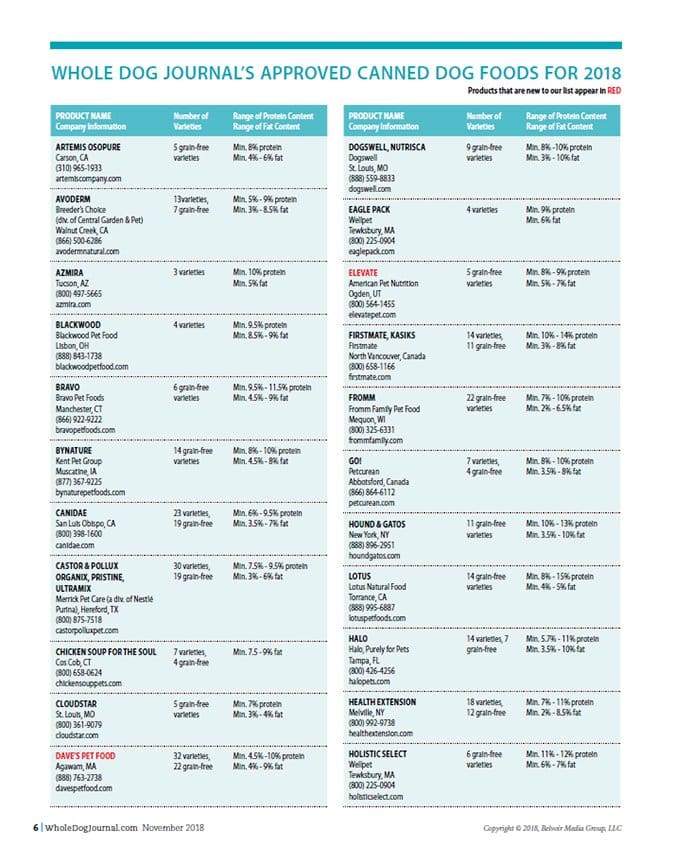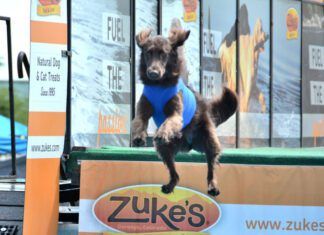I woke up at 6 a.m., stretched and glanced down to see Kai the Kelpie comfortably curled up on the corner of my bed under his blanket. My husband Paul had left for work an hour earlier, so Kai and I got in a little exclusive snuggle time before he would have to share my attention with Sunny, the Pomeranian-mix newcomer to our family. Sunny was still happily snoozing upside down on his bed in an exercise pen; he’s not yet earned the nighttime freedom that would give him all-night access to our bed.
As you might have guessed, we are perfectly comfortable with dogs on our furniture much of the time, as long as they play by our rules.
Downstairs, in dog territory, Kai and Sunny both have open invitations to get on the living room sofa and recliners, but are not allowed on dining room chairs or, of course, tables, desks, or counter tops. They pretty much have free range of the first floor, unless we are going to be away from the house for an extended period, in which case they are baby-gated in my office. At any given time, we might find a dog on a dog bed, in a crate, or on the sofa or a recliner. In a culture where we tend to give our dogs very few opportunities to make choices, it’s nice to be able to give them this one.
Should You Let Dogs on the Furniture?
Of course, if you don’t want your dog on the furniture, that’s perfectly okay too – it’s up to you – there’s no right or wrong here!
I personally love a dog on my lap or under my arm when I’m sitting on the sofa. Not only do I enjoy the cuddling, I also get cold easily and love the warmth of dog bodies next to me. In our home, we keep the furniture covered with blankets for easy removal when company comes (dog hair begone!) and both dogs are taught to get off and/or stay off when asked to do so.
If you prefer your dogs to stay on the floor, then just teach them that’s where they are supposed to be, using appropriate management and force-free training methods.
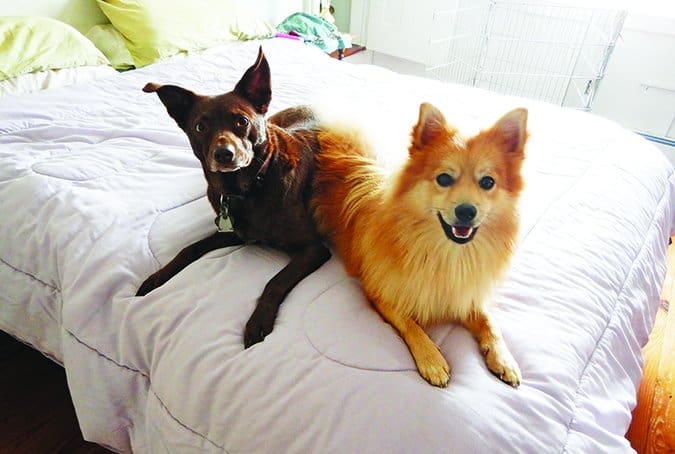
Manage Your Dog’s Furniture Access
In this case, “management” means preventing your dog from having any opportunity to do what you don’t want her to do. If you don’t want your dog to be on the sofa when you are not home, take steps to prevent her from being able to get on the sofa! It’s that simple!
To this end, some people remove the cushions from their sofa (or flip them up) when they leave their homes, until their dog has developed the habit of sleeping elsewhere. Others put boxes on the sofa to block the dog’s access, or use a baby gate to keep the dog out of the room.
Some dogs are simply seeking the most comfortable place to sleep that they have access to. If it’s comfort that she’s seeking, you could look for a much cushier dog bed and prevent her access to the sofa until she learns that her new bed is wonderful.
I have at least one client who actu-ally bought a second (small) sofa for the dog. This way she can cuddle with the dog when she wants on the dog sofa and keep her human sofa pristine.
Just like we don’t tell dogs they can never go to the bathroom (instead, we teach them that it’s okay to eliminate in this place, but not that one) we can easily teach our dogs that it’s okay to lie on this sofa but not that one.
Teach Your Dog Furniture Rules
If you are comfortable with allowing your dog to get on the furniture any time she likes, you probably have but to invite her up, and praise her when she obliges. If she’s been previously reprimanded for getting on the sofa it may take a little more encouragement to convince her that now it’s okay, but it shouldn’t be too difficult.
If, however, you want her to get on the furniture only when you have cued her to do so, and to get off the furniture also on cue, you will have to teach her those behaviors. This is called “putting the behavior under good stimulus control” (she does it only when asked).
Again, teaching a dog to get up on the furniture is usually pretty simple. Use a cue (such as “Up!”) when you invite her onto the bed. Lure her up if necessary. When she’s up, mark the behavior with the click of a clicker or verbal marker, such as the word “Yes!” and give her a treat. Then say “Off!” and toss a tasty treat on the floor. When she jumps off to get it, click again, and she can get the treat off the floor.
After several repetitions of this, start “fading” the lures, by giving the “Up” or “Off” cue and then waiting a few seconds to see if she does the requested behavior. If she doesn’t, motion suggestively but don’t toss the treat on the floor or actually lure her onto the bed. When she responds, click and treat. Gradually reduce the suggestive movement until she’s doing the “Up” and “Off” behaviors on verbal cue only.
Next, start alternating other forms of reinforcement. If you click you must feed the treat, but occasionally skip the click and treat, just praising instead, or giving her a scratch behind the ear, or inviting her outside for a game of fetch.
So what should you do if she hops up on the furniture when you have not asked her to do so? In order for this to work, you also will need to train and reinforce her generously for a behavior that is incompatible with being on the furniture, such as lying on a comfortable mat nearby. Cue her to do that whenever she looks like she might jump up on the furniture without invitation – and make sure she gets reinforced for getting on the sofa only when she does it “on cue” (when she has been invited).
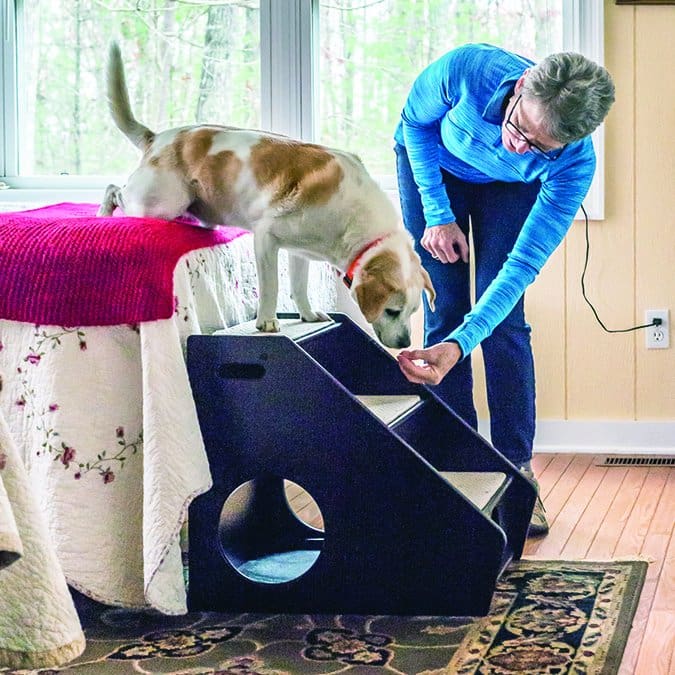
If you don’t want your dog to be on the furniture at all, teach and reinforce the incompatible behavior, and never invite her up or reinforce her for getting up on the furniture. Of course, the whole family has to be on board with this; if one family member invites/allows/reinforces her for getting on the sofa, you can’t expect her to stay off!
And to repeat myself, whether you want her to have no access to the furniture or access by invitation only, you will need to manage the environment to prevent her from getting up uninvited when unsupervised, until you are confident that she is fully trained.
But “She Knows Better!”
If your dog “knows” she’s not supposed to get on the sofa, and she never gets on it while you’re home, but you come home from work to find dog hair on the cushions, it’s not because she’s being “sneaky” or disobedient.
You think you taught her not to get on the sofa. But what you really taught her was that it’s not safe or at least “not okay” to get on the sofa while you are home because you will yell at her, or otherwise “correct” her in some manner. She has discovered that it’s perfectly okay to get on the sofa when you’re not home because no one tells her to get off, nothing bad happens, and by the way, the sofa is way more comfortable than the floor or the thin blanket you gave her to lie on in her crate!
Rather than being annoyed or angry with her for being “sneaky,” you might, instead, admire her intelligence and problem-solving ability – and take steps to prevent her access to the sofa when you are not home.
Aggressive About Furniture?
What if your dog displays aggressive behavior when she’s on the bed or sofa? Often I hear from owners who allow their dogs on the furniture, but who become understandably upset when their dogs “act out” when they are comfortably ensconced – perhaps the dog growls or snaps at the husband when he attempts to join his wife in bed, or when a human tries to remove her dog from the couch.
This is the rare situation where I do recommend revoking the dog’s bed privileges unless and until the behavior is successfully modified. Again, it’s up to you: You don’t necessarily have to prohibit her from ever getting on the bed (or other furniture), but you should have a way to peacefully remove her from furniture when you need her to get off, and ultimately it only makes sense for her to learn to peacefully accept people approaching the furniture.
To accomplish these basic achievements, I recommend the following tactics (in addition to teaching your dog the “Up!” and “Off!” cues):
■ Institute a “Say Please” Program.
“Say Please” simply means teaching your dog to ask for all good things by sitting first. When your dog learns to sit for good stuff, she learns to be more deferent. “Want a cookie?” She needs to sit first. “Want to go outside?” Then sit first. “Want your dinner bowl?” Sit first. “Want me to throw the ball?” Sit first. You get the idea.
If status is part of what’s motivating your dog’s aggression on the furniture, convincing him to be voluntarily more deferent to you by sitting for good stuff can help modify the guarding behavior. However, you’ll still need to do some modification work.
■ Counter-Conditioning Protocol.
Dogs who growl at someone approaching them when they are on the furniture do so because something about that approach is stressful for them. If you can change the dog’s association with, and her emotional response to, the person approaching, she will change her behavior.
If she growls at you when she’s on the bed, arm yourself with a pouchful of very tasty treats. (These days, my preferred treat for counter-conditioning is chicken strips; I buy them in the freezer section of the grocery store and thaw them as needed.) With your dog on the bed, walk casually past and toss a few bits of chicken to her on the bed. (You’re not asking her to get off the furniture in this exercise.)
If she growls at you anyway, walk past at a greater distance, and toss chicken. Don’t make eye contact with her. Continue to walk by the bed, back and forth, tossing treats each time you pass, until your dog happily anticipates your approach.
Then gradually decrease distance, and, assuming you still see your dog look happy when you pass by, start making your approaches more direct, until you can walk right up to her and get a happy “Where’s my chicken!” expression. This replaces her negative stress association to your approach and her aggression with eager anticipation, as she realizes that your approach means she’s about to receive some treats.
If she’s growling at someone else approaching you in the bed, again, arm yourself with chicken and ask the person to stand at a distance where the dog sees him but isn’t growling. That may mean totally out of the bedroom! Have the person take one step toward you, and immediately start feeding chicken to your dog; don’t wait for a growl. After several treats, have the person step back, and stop feeding.
Repeat this process until your dog looks happy – and looks to you for chicken – as the person takes one step forward. Then, with the person at the same starting spot, have him take two steps forward. Repeat until the person can approach the bed without any sign of tension from your dog. Then have him do the walk-by chicken-tossing procedure described above.
■ Consider Operant Conditioning.
As an alternative to classical counter-conditioning, you could teach your dog a new behavior when someone approaches the bed, with the goal of changing her emotional response and behavior at the same time. This procedure is called “Constructional Aggression Treatment,” or C.A.T. If you decide you want to try this approach, I urge you to work with someone who is skilled at reading dog body language and understands the C.A.T. procedure, since its success depends on the observer’s ability to identify very small changes in your dog’s body language.
In this process, you would move toward your dog on the bed. As soon as you see any small sign of tension, you would stop and just stand still. Wait there until you see a small sign of relaxation, then move away. As you repeat the procedure, your dog learns that being relaxed makes you go away, so she becomes more and more relaxed. As her behavior changes and she becomes deliberately relaxed, the change in her emotional response follows.
It can work, but it can be a little tricky to see the body language changes. You definitely need an experienced helper for this one.
If Your Dog Growls When She’s on the Furniture
I commend any dog owner who commits herself to improving her dog’s behavior, but recognize that it might take a little time for the improvement to “stick.” Until your dog’s new behavior is reliable, here’s what to do if your dog growls at you or your partner when she is on the couch or bed: Calmly stop whatever you were doing, be still, and wait a few moments until the dog relaxes a little. Then invite her off the bed with her “Off!” cue (or a tossed treat as a lure, if she hasn’t yet learned the cue) to defuse the current situation. Then start or increase your efforts at a management and modification plan.
Here’s what not to do: Don’t physically punish or attempt to verbally intimidate your dog. There’s absolutely nothing to be gained by aggressing back when she growls at you.
That’s so important I’ll say it again. Do not punish your dog for growling. Punishment is likely to make her behavior worse, because your aggression will add to the stress that’s making her behave aggressively. It’s your job, as a member of the supposedly more-intelligent species, to figure out how to remove stress from the situation for your dog.
A Note of Caution
If your dog’s growling or other furniture-related aggression is intense, if you are trying to work with it and not making progress, or if someone has been bitten, please seek the assistance of a qualified positive behavior professional. If you’re afraid of your dog’s behavior, don’t attempt any of the tactics below without professional assistance.
Author Pat Miller, CBCC-KA, CPDT‑KA, is WDJ’s Training Editor.


